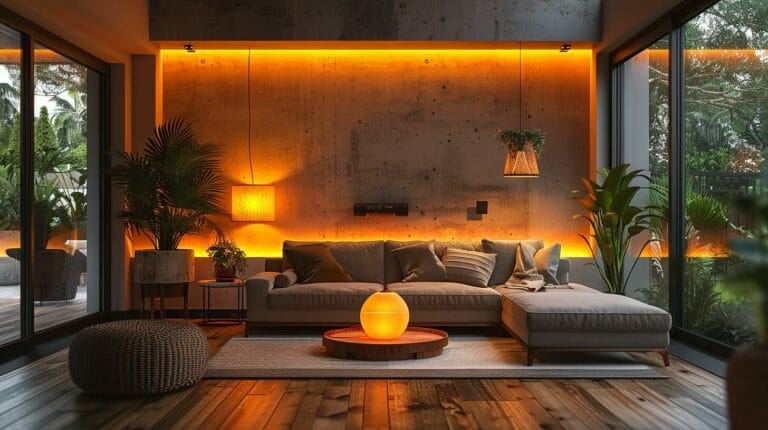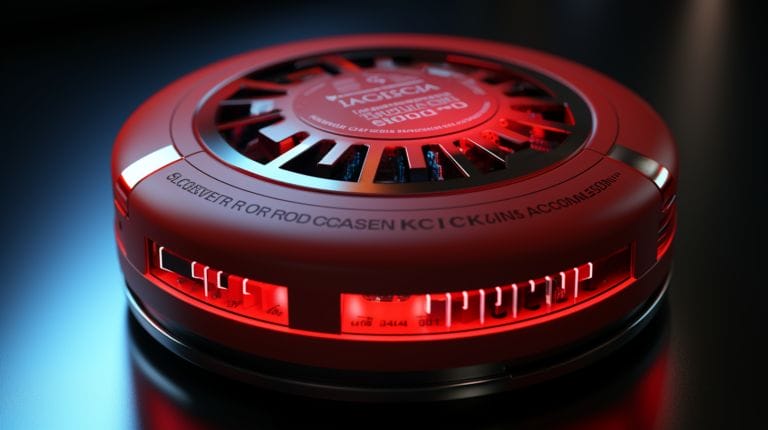6500 Kelvin to Lumens: Understanding Light Brightness
Let’s start by examining how 6500 Kelvin and lumens work together to define light brightness. We understand 6500 Kelvin produces a cool, daylight-like hue, but how does this translate to practical use? When we pair this color temperature with a high lumen output, it creates an environment that’s both bright and conducive to focus. Understanding the interplay between these two aspects helps us make informed decisions about lighting for different settings.
But what exactly makes 6500 Kelvin so effective, and how do lumens quantify brightness? This exploration will shed light on these critical questions.
Key Takeaways
- 6500 Kelvin represents a cool, daylight-like color temperature ideal for task-oriented spaces.
- Lumens measure the brightness of the light, not directly tied to the Kelvin value.
- Higher lumens equate to brighter light, regardless of the color temperature.
- Selecting the right LED involves balancing lumens for brightness and kelvin for color temperature.
- 6500 Kelvin lights with high lumens provide bright, focused illumination for productivity and visibility.
Understanding the Basics of Lumens and Kelvin in Lighting

When it comes to understanding light brightness, we need to define lumens and kelvin and their roles in lighting. Lumens measure light output, indicating how bright a light source is. The higher the lumens, the brighter the light.
Conversely, Kelvin measures color temperature, indicating the hue and tone of the light—whether it’s warm, neutral, or cool.
In the context of kelvin vs. lumens, both are vital for creating the perfect lighting ambiance. A bulb with high lumens but low kelvin will emit a bright yet warm light, while one with high kelvin and high lumens will produce a bright, cool light. Understanding this relationship helps us make informed decisions about the ideal brightness and color temperature for our spaces.
A common misconception is that higher kelvin means higher brightness, but in reality, kelvin only affects the color temperature. By focusing on both lumens and kelvin, we can tailor our lighting to suit our needs, whether it’s for a cozy living room or a high-energy workspace.
Exploring the Characteristics of a 6500 Kelvin Light Source

A 6500 Kelvin LED light, known for its cool, daylight-like hue, impacts various environments and applications. This color temperature is often preferred in settings where focus is vital, such as offices, hospitals, and laboratories. The bright, crisp light mimics natural daylight, reducing eye strain, and enhancing productivity.
When evaluating brightness, Lumens are the key metric. A 6500 Kelvin LED light bulb typically offers a high lumen output, ensuring spaces are well-lit. This makes it ideal for environments requiring sharp visibility, such as workspaces and retail stores.
Energy efficiency is another notable characteristic. LED light bulbs consume notably less energy compared to traditional incandescent bulbs. A 6500 Kelvin LED bulb not only provides superior illumination but also contributes to lower energy bills and a reduced carbon footprint.
Comparing Lumens vs Kelvin in LED Lighting

Lumens measure the brightness of the light emitted, while kelvin indicates the color temperature of that light. Together, they help us make informed decisions about the kind of ambiance and functionality we want in our spaces.
When comparing lumens vs kelvin in LED lighting, we need to consider the following:
- Brightness: Lumens quantify the total amount of visible light emitted by an LED. The higher the lumens, the brighter the light.
- Color Temperature: Kelvin measures the hue and appearance of the light. Lower kelvin values (e.g., 2700K) produce warm, yellowish light, while higher values (e.g., 6500K) emit cool, bluish light.
- Ambiance: The combination of lumens and kelvin shapes the room’s atmosphere. For instance, high lumens with low kelvin create a cozy environment, perfect for living rooms.
- Practicality: Professionals use a balance of lumens and kelvin to enhance functionality. For example, office spaces often require high lumens with mid-range kelvin for optimal productivity.
Selecting the Right LED Light: Lumens and Kelvin Considerations

Choosing the right LED light involves understanding the interplay between lumens and kelvin to meet your specific lighting needs. Lumens measure the brightness of an LED light, while kelvin indicates its color temperature.
When selecting LED lights, start by evaluating the lumens. Higher lumens mean brighter light. For instance, a workspace may require around 800-1100 lumens for the best brightness, ensuring productivity and focus. Conversely, a cozy reading nook might benefit from 450-800 lumens, creating a warm, inviting atmosphere.
Next, consider the kelvin. The kelvin scale ranges from warm yellowish tones (2700K-3000K) to cool bluish-white tones (5000K-6500K). Warm tones are perfect for relaxing areas like living rooms and bedrooms, whereas cooler tones are ideal for task-oriented spaces such as kitchens and offices.
Avoid common mistakes like choosing lights solely based on wattage, which doesn’t accurately reflect brightness for LEDs. Instead, focus on lumens and kelvin for precise selection.
Practical Applications of 6500 Kelvin to Lumens Conversion

Understanding the practical applications of 6500 kelvin to lumens conversion can greatly enhance various lighting environments.
- Home Lighting: By converting 6500 Kelvin to appropriate lumens, we can create bright, daylight-esque environments that improve productivity and focus in home offices.
- Industrial and Commercial Spaces: For warehouses and factories, high brightness is essential. Using 6500 Kelvin lighting guarantees clear visibility, enhancing worker safety and operational efficiency.
- Event Lighting: At events, the right brightness can set the desired ambiance. Whether it’s a concert or a conference, 6500 Kelvin lighting delivers a crisp, professional look.
- Photography and Filmmaking: Achieving the perfect shot often requires precise lighting. Utilizing 6500 Kelvin light sources ensures accurate color representation and sharpness, essential for high-quality visual content.
Conclusion
In understanding the relationship between 6500 Kelvin and lumens, we’ve explored how these two elements impact lighting.
By grasping how lumens measure brightness and Kelvin indicates color temperature, we can make informed decisions for our spaces.
Whether we need a well-lit, energizing environment or a functional, focused setting, considering both lumens and Kelvin helps us achieve the perfect balance of functionality and aesthetics.
Let’s use this knowledge to create ideal lighting solutions for any situation.
Frequently Asked Questions
What is color temperature and how does it relate to brightness?
Color temperature refers to the hue of light produced by a light source, measured in Kelvin (K). In general:
- Higher Kelvin values (e.g., 6500K) produce cooler, bluer light.
- Lower Kelvin values produce warmer, yellower light.
Brightness, on the other hand, is measured in lumens, which indicates the amount of light emitted by a bulb. The color temperature of a light source can influence how bright it appears to the human eye, with cooler temperatures often perceived as brighter.
How do I convert 6500 Kelvin to lumens?
The relationship between color temperature (Kelvin) and brightness (lumens) is not a direct conversion. However, you can use a lighting chart or consult the manufacturer’s specifications for the specific bulb or LED technology you are using to determine the lumen output corresponding to a 6500 Kelvin light.
What is the difference between wattage and lumens when it comes to measuring brightness?
- Wattage measures the amount of electrical power consumed by a light source.
- Lumens measure the amount of light output.
Higher wattage does not necessarily mean higher brightness; it’s the lumens that indicate how bright a light source is. LED technology, for example, is known for being more energy-efficient in producing lumens compared to traditional halogen bulbs.
How can I determine the equivalent brightness of an LED bulb compared to traditional light fixtures?
Check the lumens output of the LED bulb. LED technology is generally more energy-efficient, so a lower wattage LED bulb can often produce the same amount of lumens as a higher wattage traditional bulb. You can use a lighting chart or consult the manufacturer’s specifications for more information.
Why is it important to reference lumens when choosing a light fixture for a specific task or purpose?
Lumens are a more accurate unit of measurement for brightness compared to wattage. When selecting a light fixture for a particular task or purpose, referencing lumens ensures that you get the desired level of brightness needed. Different industries and applications may have specific lumen requirements to achieve optimal lighting conditions.







